|
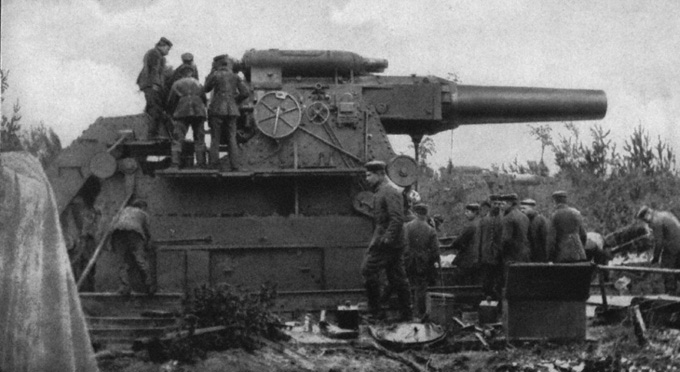 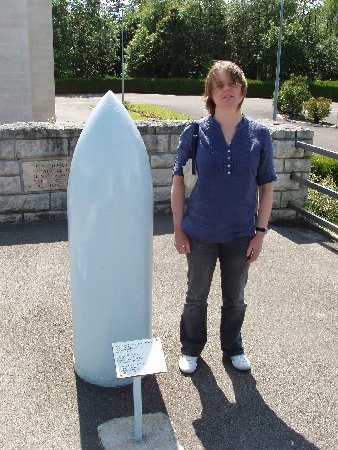 Fort
Sartelles was constructed during the second phase of the extensive fort
building scheme carried out around Verdun following the Franco-Prussian
War. As such it had far better blast and penetration protection against
heavy German artillery which was advancing in quantum leaps at that time.
The earlier "panic forts" constructed in great haste immediately after the
cessation of hostilities less than a decade before had relied for
protection upon a strong masonry shell surrounding an air gap, and within
this was constructed the masonry interior structure of the fort. This
system proved woefully inadequate because the new German artillery shells
not only penetrated much further due to their new shape, but they also
packed a far mightier punch due to the composition of their new explosive.
Thus two enormous escalations of the arms race of the time in rapid
succession drastically changed the construction techniques of the forts
practically overnight. Fort
Sartelles was constructed during the second phase of the extensive fort
building scheme carried out around Verdun following the Franco-Prussian
War. As such it had far better blast and penetration protection against
heavy German artillery which was advancing in quantum leaps at that time.
The earlier "panic forts" constructed in great haste immediately after the
cessation of hostilities less than a decade before had relied for
protection upon a strong masonry shell surrounding an air gap, and within
this was constructed the masonry interior structure of the fort. This
system proved woefully inadequate because the new German artillery shells
not only penetrated much further due to their new shape, but they also
packed a far mightier punch due to the composition of their new explosive.
Thus two enormous escalations of the arms race of the time in rapid
succession drastically changed the construction techniques of the forts
practically overnight.
LEFT
ABOVE - a massive
Krupps 420mm siege gun.
RIGHT -
TJ stands by a 420mm shell to give you an idea of how big these rounds
were.
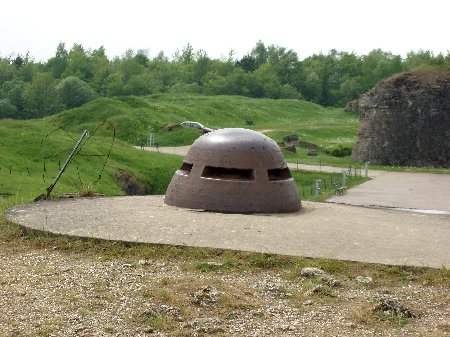 The
"panic forts" had relied upon
portable artillery pieces sited within the fort, together with huge
masonry and earth shielded shelters for the crews and ammunition storage.
Localised small arms support was afforded by the garrison infantry
sheltering behind ramparts on the top of the forts. This next generation
of forts, of which Sartelles was one of the first to be built, relied
instead upon self contained, armoured fighting turrets constructed of
steel and concrete. Unlike some of the other forts though Sartelles did
not have any artillery turrets but was armed instead with two twin
Hotchkiss machine gun turrets. Each turret was supported by an armoured
observation "cloche" which consisted of a narrow concrete tube almost to
the surface, capped with a 7 inch thick armoured steel dome through which
observation officers could direct the fire of the adjacent MG turret. The
one shown
LEFT
is located at nearby Fort Douamont
which was built only four years after Sartelles so it is to all intents
and purposes identical. The
"panic forts" had relied upon
portable artillery pieces sited within the fort, together with huge
masonry and earth shielded shelters for the crews and ammunition storage.
Localised small arms support was afforded by the garrison infantry
sheltering behind ramparts on the top of the forts. This next generation
of forts, of which Sartelles was one of the first to be built, relied
instead upon self contained, armoured fighting turrets constructed of
steel and concrete. Unlike some of the other forts though Sartelles did
not have any artillery turrets but was armed instead with two twin
Hotchkiss machine gun turrets. Each turret was supported by an armoured
observation "cloche" which consisted of a narrow concrete tube almost to
the surface, capped with a 7 inch thick armoured steel dome through which
observation officers could direct the fire of the adjacent MG turret. The
one shown
LEFT
is located at nearby Fort Douamont
which was built only four years after Sartelles so it is to all intents
and purposes identical.
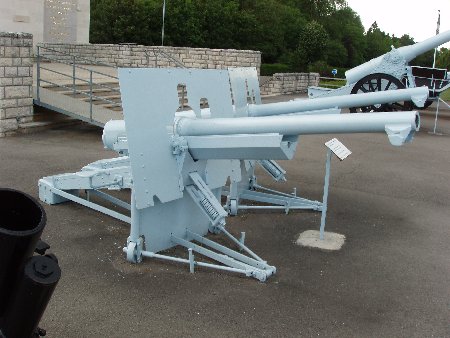 Fort
Sartelles underwent two periods of modification before the outbreak of the
Great War, and these included the up-armouring of the fort, and the
construction of two Bourges Casemates to provide a "quick fix" artillery
addition in the form of FOUR fast firing 75mm artillery pieces.
The variant of this gun shown
in our photograph
RIGHT
has no wheels or axle for horse drawn transportation like the field
version of the gun, rather it has a fixing point at the front which was
anchored to a pivot point directly behind the firing port of the casemate, and a pair of
small wheels set at 90 degrees to the barrel (which can be clearly seen in
the photograph) enabled the gun to run on semi-circular tracks within the
casemate through a fixed arc, thus facilitating the fastest possible
traverse to the point of aim. Fort
Sartelles underwent two periods of modification before the outbreak of the
Great War, and these included the up-armouring of the fort, and the
construction of two Bourges Casemates to provide a "quick fix" artillery
addition in the form of FOUR fast firing 75mm artillery pieces.
The variant of this gun shown
in our photograph
RIGHT
has no wheels or axle for horse drawn transportation like the field
version of the gun, rather it has a fixing point at the front which was
anchored to a pivot point directly behind the firing port of the casemate, and a pair of
small wheels set at 90 degrees to the barrel (which can be clearly seen in
the photograph) enabled the gun to run on semi-circular tracks within the
casemate through a fixed arc, thus facilitating the fastest possible
traverse to the point of aim.
The moat protection
was also radically improved by the construction of one single and one
double counterscarpe gallery accessed by tunnels travelling beneath the
moat. The existing gorge caponniere protecting the front of the fort and
the drawbridge access was retained. The reason for the move to
counterscarpe galleries rather than a continuation of the use of
capponieres was the fact that the roof of a caponniere has to be massively
reinforced in order to prevent the destruction of the fighting gallery
within by plunging howitzer or siege mortar ordnance. As with all the
Verdun forts, and indeed most of the French forts, protection of the moat
against enemy infanctry and pioneers was achieved with Hotchkiss "Revolver Canons", a kind of Gatling Gun with five 37 mm barrels.
Capable of firing 43 rounds per minute with an accurate range of 2000
yards, they were more than adequate for the defence of the short moat
sections. Additionally infantry manned firing ports within the fighting
galleries armed with rifles and light machine guns, and large horizontal
ports at knee level allowed the "posting" of hand grenades into the moat.
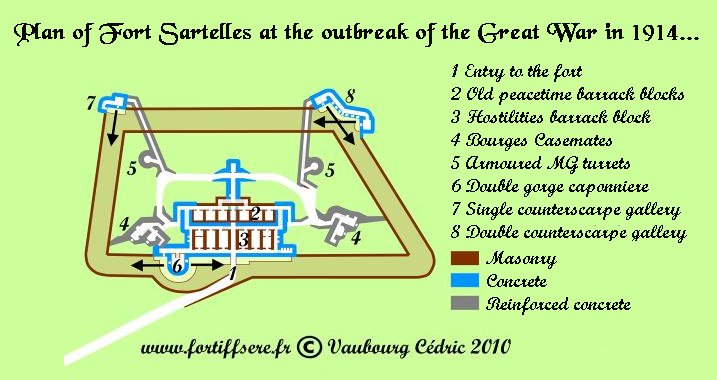 In
1917, following the Battle of Verdun, a need was identified for the
construction of connecting corridors between the individual fighting
compartments within all the Verdun forts - Fort Vaux had fallen for want
of drinking water even though isolated areas of the fort had been able to
continue the fight after German infantry had penetrated the fort. A system
of modifications began early in 1917 but most of the so called Travaux 17
(literally 1917 works)
tunnels were never properly concrete lined. Consequently many have
collapsed today or are barely hanging on, held up by the rotten remnants
of wooden pit props. In
1917, following the Battle of Verdun, a need was identified for the
construction of connecting corridors between the individual fighting
compartments within all the Verdun forts - Fort Vaux had fallen for want
of drinking water even though isolated areas of the fort had been able to
continue the fight after German infantry had penetrated the fort. A system
of modifications began early in 1917 but most of the so called Travaux 17
(literally 1917 works)
tunnels were never properly concrete lined. Consequently many have
collapsed today or are barely hanging on, held up by the rotten remnants
of wooden pit props.
The actual
construction techniques of the Verdun forts did not vary greatly beyond
that which we have already mentioned regarding the phases of construction
in answer to the various artillery evolution crisis of the time.
There is however one fundamental factor that varies from fort to fort and
that is the placement of the fort ABOVE ground vs. placement of the fort
IN the ground. Fort Sartelles was dug down into the ground and so an
access ramp descends into the moat from the adjacent road.
A small secondary moat directly in front of the main access door into the
fort is crossed by a drawbridge. Most of the fort therefore sits below ground level with only the
Bourges Casemates etc. above.
 On
the
LEFT is
a "floor plan" of Fort Sartelles, shown here by kind permission
of Cedric and Julie Vaubourg. I would strongly recommend a visit to their
excellent site where comprehensive information and masses of superb
photographs document this and all the other Verdun forts, AND many other
fortifications throughout the whole of France. The sheer amount of work
they have done absolutely beggars belief and they must input practically
every minute of their spare time into documenting the French fortresses.
It is therefore a "must see" site
and there is a picture link to it here
ABOVE
RIGHT . On
the
LEFT is
a "floor plan" of Fort Sartelles, shown here by kind permission
of Cedric and Julie Vaubourg. I would strongly recommend a visit to their
excellent site where comprehensive information and masses of superb
photographs document this and all the other Verdun forts, AND many other
fortifications throughout the whole of France. The sheer amount of work
they have done absolutely beggars belief and they must input practically
every minute of their spare time into documenting the French fortresses.
It is therefore a "must see" site
and there is a picture link to it here
ABOVE
RIGHT .
Here is a selection taken from
the photos we took at Fort Sartelles in May 2012.
|
|
To view any of the photographs
in a larger format click the small
photo and a large version will open in another window.
|
|
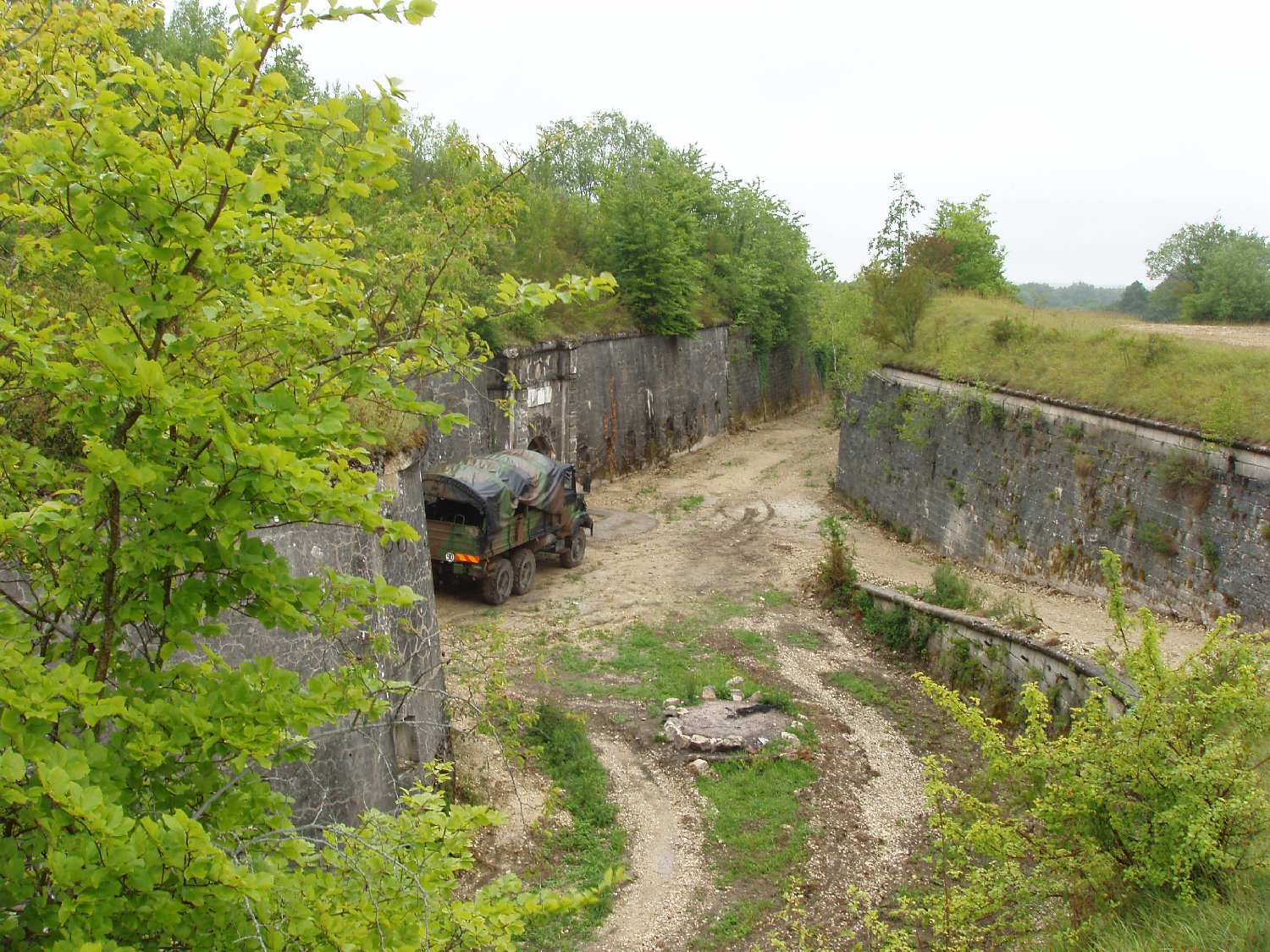
Evidence that
the local Régiment de Chasseurs still use this fort! |
|
The photographs on this
website MAY NOT BE USED WITHOUT THE EXPRESS PERMISSION of the
website author... |
|